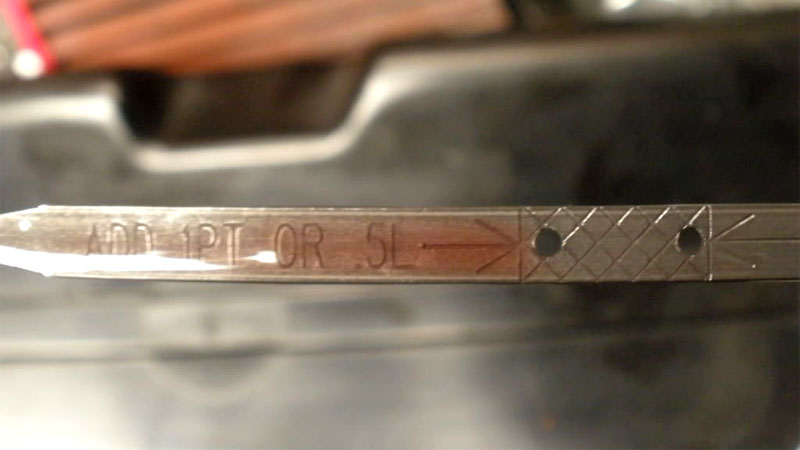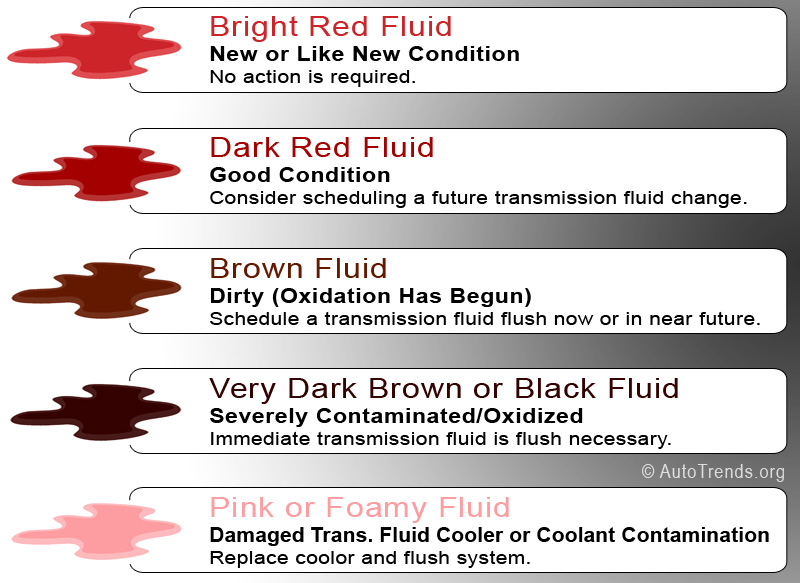Few vehicle components are as significant in terms of operational value, as a transmission. Without a transmission, a vehicle would be incapable of delivering power to its drive-wheels, thereby making it impossible to commute from one location to another.
A specialized lubricant, known simply as transmission fluid, is utilized to prevent excessive wear of a transmission´s internal components and to provide necessary fluid power for operation. However, like any lubricant, transmission fluid is susceptible to eventual breakdown with time.
Luckily, motorists can often gauge the condition of their vehicle´s transmission fluid, simply by assessing its color. While such efforts are not an exact science, they do provide a certain level of insight into the general well-being of the transmission itself.
By understanding the meaning behind these color variances, one can ensure that their transmission receives ample maintenance throughout its service life. Read on to learn more about analyzing the status of your vehicle´s transmission fluid, by assessing its color and state.
See Also – 6 Car Fluids to Check
What is Transmission Fluid?
Transmission fluid is a specialized lubricant intended to fight wear within a transmission´s internal gearcase. This fluid circulates throughout a transmission, preventing the erosion of metal components, while also conditioning various seals and gaskets. Transmission fluid also serves as a coolant of sorts, removing heat from the transmission as it circulates.
In most cases, transmission fluid also functions as a hydraulic fluid of sorts, facilitating clutch pack and torque converter engagement. For this reason, this fluid must be largely sheer-resistant, and incapable of being compressed.
Transmission fluid often differs in composition, depending upon whether a particular transmission features an automatic or manual gearbox. The main difference between these two fluids relates to the particular anti-wear additive package that is used.
Read Also – Is Your Transmission Fluid Leaking?
Why is Transmission Fluid Red?
In general, transmission fluid often appears red in color. This, of course, is for good reason. As it turns out, transmission fluid is actually dyed red to simplify the identification of impurities. Without this dye, transmission fluid is typically transparent in nature, making it somewhat difficult to analyze in detail.
After being dyed red, transmission fluid takes on a more opaque appearance, making it rather easy to detect even the most subtle of color changes. As such, transmission fluid´s color can be used as a fairly reliable indicator of overall state and status.
See Also – What Does White Smoke From Your Exhaust Mean?
What Should Transmission Fluid Smell Like?
Healthy transmission fluid that has not exceeded its standard service life typically has little odor, though many also claim that fresh transmission fluid has a slightly sweet smell. However, this odor begins to change with time, indicating possible degradation.
As transmission fluid begins to age, it often takes on a ¨burnt¨ smell, which is largely unmistakable. This smell tends to be quite strong and can be easily detected upon removing a transmission´s dipstick from its dipstick tube.
While odorless, or slightly sweet smelling transmission fluid is in little need of service, those which smell burnt or contaminated should be closely watched. One should also consult factory-specific service literature for their vehicle when attempting to determine when service should be conducted.
Read Also – 7 Signs of Transmission Troubles
Transmission Fluid Colors
A lot of information can be gleaned by assessing the color of a vehicle’s transmission fluid. Those with a keen eye can determine the state of their vehicle´s transmission fluid, simply by studying its color and consistency.
The following is a description of various potential transmission fluid colors, as well as what such coloring is indicative of.
Bright Red

As long as a vehicle’s transmission fluid retains its bright red coloring, little in the way of service is required. Nonetheless, factory-specified service intervals should still be followed.
Dark Red

At this point, motorists might consider scheduling a transmission fluid change, especially if their vehicle has reached its factory-specified service interval. Such services can significantly extend the life of almost any transmission.
Brown

A transmission fluid flush is advised in the near future, whenever brown or otherwise dingy transmission fluid becomes evident. Without proper service, this condition can significantly worsen in short order.
Very Dark Brown (or Black)

A fluid of this color also tends to present a “burnt” smell. A full system flush is required immediately. In the absence of this service, “slipping” can manifest in short order.
Pink or Foamy

In the vast majority of cases, this reflects the presence of a damaged or otherwise compromised transmission fluid cooler. Engine coolant is being introduced into a vehicle’s transmission fluid, drastically reducing lubricant viscosity.
In situations such as this time is of the essence. A vehicle’s transmission fluid cooler should be replaced, and all contaminated systems should be flushed as soon as possible.
- History of the Chevrolet SSR: The Retro-Styled Convertible Pickup - Apr 25, 2024
- The History of the BMW M Coupe (the “Clown Shoe”) - Mar 26, 2024
- The History of the Ford Flex - Feb 28, 2024




Hi – in a discussion when to change atf on Ford’s 10r80 – (recommended by Ford at 150k) , I mentioned that color of the ATF is a good indicator of the fluid’s condition, however someone said that Mercon ULV darkens rapidly in the 10r80 so color wasn’t a reliable indicator, however the person couldn’t provide a source for that info, only saying theirs was blackish at 30k miles, I am skeptical. So does Mercon ULV darken more rapidly ?
Mercon ulv starts out as a darker red fluid than the red of a regular atf fluid we are all familiar with. With that said, a brown muddy or black appearance is always a sign of breakdiwn of viscosity and overheating of the fluid. With the known problems had with the autimatic 10-speeds i would never declare a dark brown/black tint to my automatic tranny fluid is “normal” matter the millage on the vehicle i would change the fluid immediately as this condition alone could cause signifucant damage to the vehicle & I’d upgrade my oil cooler personally & pray it’d help correct the situation of my tranny fluid becoming overheated & the subsequent break down of my transmission fluid viscosity. Hope this helps someone.